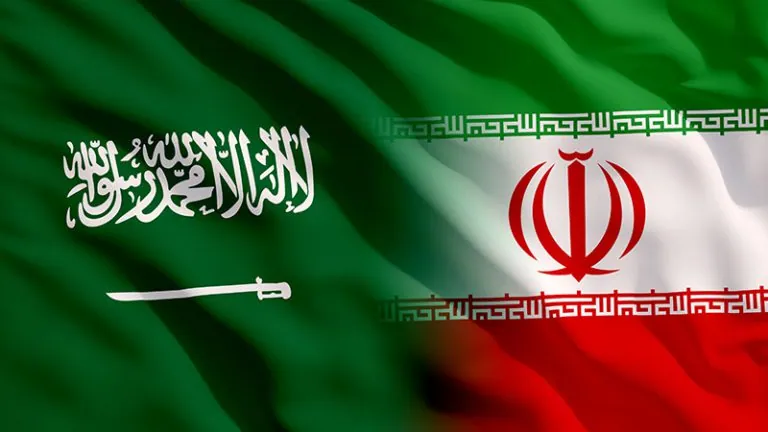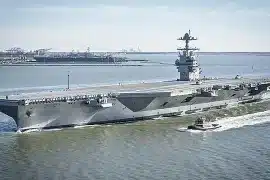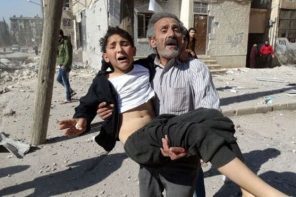The recent rapprochement between Saudi Arabia and Iran is a pivotal moment in the history of the Middle East. This breakthrough has the potential to break the longstanding deadlock in the region and bring about a new era of peace and progress. The geopolitical landscape of the Middle East stands to be dramatically transformed by this development. Let us delve into the future of this significant reconciliation between Saudi Arabia and Iran and its implications for the region.

A short history of the Saudi-Iran conflict
Iran and Saudi Arabia, two of the most influential powers in the Middle East, have been locked in a long-standing conflict that has shaped the region’s geopolitical landscape for decades.
The roots of the conflict date back to the 1979 Islamic Revolution in Iran, which overthrew the Shah and replaced him with a Shiite theocracy. This posed a threat to the Sunni monarchy in Saudi Arabia, which saw Iran’s revolutionary fervor as a challenge to its legitimacy and influence in the region.
The two countries’ differences were further exacerbated by their differing interpretations of Islam. Iran’s Shiite government saw itself as a defender of Islam’s oppressed minority, while Saudi Arabia, as the home of Islam’s holiest sites, considered itself the leader of the Sunni Muslim world.
Tensions between the two countries escalated in the 1980s during the Iran-Iraq War when Saudi Arabia supported Iraq, and Iran accused it of funding Saddam Hussein’s war efforts. The situation was further complicated by the 1987 Mecca incident, in which Iranian pilgrims protesting against the United States and Israel’s presence in the region clashed with Saudi security forces, resulting in the deaths of hundreds of people.
In 2016, Saudia Arabia cut diplomatic ties with Iran after its embassy in Tehran was set on fire in response to the execution of the prominent Shiite cleric Sheikh Nimr al-Nimr by the Saudi government.
In recent years, the conflict took on a more sectarian tone, with Iran backing Shiite groups in countries like Syria, Iraq, Lebanon, and Yemen, and Saudi Arabia supporting Sunni factions. The conflict has also been fueled by regional proxy wars, with the two countries vying for influence in countries like Syria and Yemen.
Despite occasional attempts at dialogue and rapprochement, tensions between Iran and Saudi Arabia remained high with both countries continuing used to see each other as a threat to their security and regional interests. The conflict between Iran and Saudi Arabia has had a profound impact on the Middle East’s stability and security.
Potential benefits of rapprochement between Iran and Saudi Arabia
The improvement in Saudi-Iran relations could potentially benefit in several ways.
Policy independence
For several decades, the United States has been the primary security guarantor for Saudi Arabia. The US has provided military support and protection to Saudi Arabia, which has allowed the Saudi government to focus on other areas such as economic and social development. However, this reliance on the US has also limited Saudi Arabia’s foreign policy options since they needed to consider the US’s interests and priorities.
The rapprochement would reduce Saudi Arabia’s dependence on the US for security. This could give Saudi Arabia more freedom to pursue its own foreign policy objectives, without having to worry as much about US interests. As the Crown Prince of Saudi Arabia seeks to transform the Saudi economy and society, he sees a more independent foreign policy as a crucial component of this process. This could lead to a more stable and peaceful Middle East, with more opportunities for cooperation and economic development.
Economic benefits
Iran and Saudi Arabia are both major oil-producing countries, and their cooperation in the energy sector could lead to increased stability and higher oil prices. This would benefit both countries’ economies and help them diversify their income sources.
The collapse of the 2015 nuclear deal led to the re-imposition of sanctions on Iran by the United States and other countries, severely impacting the Iranian economy. These sanctions have restricted Iran’s ability to trade with other countries, access international financial institutions, and export its oil, which is a major source of revenue for the country.
The reset in Saudi-Iran ties can open up new avenues for Iran to circumvent the sanctions. Saudi Arabia can potentially increase trade with Iran, providing a much-needed boost to its economy. Moreover, Saudi Arabia can offer Iran alternative routes for oil exports and access to international financial institutions, which will alleviate some of the pressure of the sanctions.
Moreover, when tensions are reduced and conflicts are resolved, both countries can shift their focus towards developing their economies and societies. This can lead to increased investment in infrastructure, job creation, innovation, and trade, which can ultimately improve the standard of living for citizens in both countries.
Political stability
Improved relations between Iran and Saudi Arabia could contribute to greater stability in the region, as they are key players in the Middle East. A more stable region would be beneficial to both countries’ security and economic interests.
Regional cooperation
Iran and Saudi Arabia could work together on regional issues, such as resolving conflicts in Syria, Yemen, and Iraq, and fighting against terrorism. Their cooperation would enhance their influence in the region and allow them to play a more active role in shaping the political landscape.
What does the rapprochement mean for conflicts in the Middle East ?
The reduction of tensions between Iran and Saudi Arabia could also have a wider impact on regional politics. It could lead to a shift in the balance of power in the Middle East, as the two countries have historically been aligned with different factions and proxies.
Yemen
The civil war in Yemen has been a significant source of tension between Saudi Arabia and Iran. Saudi Arabia entered the conflict in 2015, supporting the Yemeni government that had been exiled by the Houthi rebels who had seized the capital, Sanaa, in 2014. Meanwhile, Iran has backed the Houthi rebels. The conflict has turned into a proxy war between Saudi Arabia and Iran and has resulted in one of the world’s worst humanitarian disasters, with millions of people displaced and in need of aid.
Diplomatic efforts have been underway to find a way to end the conflict and ease the suffering of the Yemeni people. The rapprochement between Saudi Arabia and Iran could provide a boost to these efforts and could lead to a significant reduction in violence and suffering in Yemen. It will serve as the primary and critical test of the newly established Saudi-Iran ties.
Relevant article: Implication of Saudi-Iran rapprochement on Yemen
During a news conference following the announcement of the pact, United Nations spokesperson Stéphane Dujarric noted that the situation in Yemen remains fragile but is showing some positive trends. Dujarric expressed hope that the new agreement would have a positive impact on not only the situation in Yemen but also on other conflict zones.
Lebanon
Iran has long backed the Lebanese Shiite militia Hezbollah, while Saudi Arabia has supported the country’s Sunni politicians. The potential rapprochement between Saudi Arabia and Iran could have implications for the political situation in Lebanon. This could help stabilize the country, which is currently facing an unprecedented financial crisis.
Relevant article: What does the Saudi-Iran rapprochement mean for Lebanon?
Syria
The conflict in Syria has been a major point of contention between Iran and Saudi Arabia, with Iran backing President Bashar Assad while Saudi Arabia has supported the rebels fighting against him. However, in recent months, Arab nations, including Saudi Arabia, have moved closer to Assad, particularly after the earthquake that hit both Syria and Turkey.
The recent diplomatic deal between Saudi Arabia and Iran could further strengthen Assad’s hand by making it more palatable for Riyadh to interact with him. This could potentially lead to a political reconciliation between Saudi Arabia and Syria and a reduction in tensions between the two countries.
However, it’s important to note that the conflict in Syria is complex and involves multiple parties with different interests. The recent rapprochement between Saudi Arabia and Iran is just one factor that could potentially impact the situation in Syria. Other factors, such as the involvement of Russia and Turkey, will also play a significant role in shaping the outcome of the conflict.
The changing role of big powers in the Middle East
US
The Biden administration has expressed cautious optimism about the rapprochement between Iran and Saudi Arabia and said it is supportive of any initiatives that can help reduce tensions in the Middle East. However, US officials are skeptical about Iran’s commitment to follow through on its promises and have expressed that they will closely monitor the situation.
Furthermore, China’s involvement in mediating the rapprochement has raised concerns about the ongoing geopolitical competition between the US and China in the Middle East and beyond. While it remains unclear if Chinese efforts will be successful, US officials are likely to be monitoring the situation closely to ensure that China’s involvement does not harm American interests in the region.
China
China has solidified its position as an indispensable power in the Middle East by successfully brokering a significant deal, positioning itself ahead of the United States in their pursuit of regional dominance.
Notably, Bloomberg quotes Torbjorn Soltvedt, a leading analyst for the Middle East and North Africa at Verisk Maplecrof, who observes that China’s influence in the Persian Gulf has been considerably strengthened by this move. Soltvedt further notes that there has been a noticeable shift of the region’s oil and gas exports towards the east, with China taking full advantage to bolster its commercial and diplomatic presence in the Middle East.
Is Iran-Saudi rapprochement a threat to Israel?
Israel seems to be caught off guard by the unexpected news of the Saudi-Iran rapprochement. Israel has long been planning to build an alliance with Saudi Arabia against Iran although Saudi Arabia never recognized Israel officially. The rapprochement is seen as a threat to Israel’s strategic interests, as it would undermine its efforts to build an anti-Iranian alliance in the region. Israel views Iran as an existential threat due to its support for anti-Israeli groups in the region, its nuclear program, and its opposition to the Israeli state.
Relevant article: Why is Israel afraid of Saudi-Iran rapprochement?
Iran-Saudi rapprochement and the Islamic world
Both countries are important players in the Muslim world, and their reconciliation could help ease sectarian tensions between Shia and Sunni Muslims. This could contribute to a more peaceful and tolerant environment in the region.







